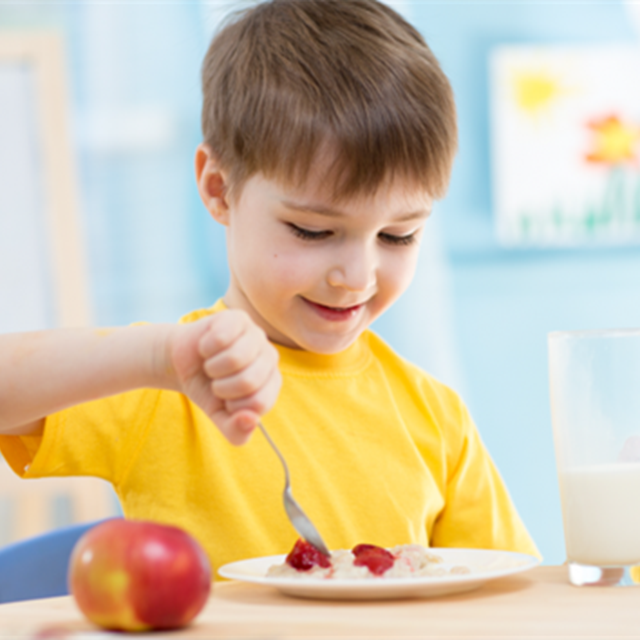
When it comes to childhood nutrition, parents often face the difficult balance of finding healthy food that is good for their child's development and food that children want to eat. In searching for the perfect grocery list and home menu items, one of the best things parents can do is educate themselves on the basics of what foods are healthy and how to prepare and present nutritious meals that can build a lifetime of healthy habits for their children.
A key thing to remember is that nutrition for kids is based on the same basic principles as nutrition for adults. Every human needs essential nutrients, including vitamins, minerals, carbohydrates, and fat, regardless of age. Parents should also remember that children need different amounts of specific nutrients at different ages for healthy growth and development.
According to the Centers for Disease Control's Dietary Guidelines for Americans (2020-2025), children ages two and older should follow a healthy eating pattern that includes foods with nutrients that promote health and help prevent chronic disease. These staples include a variety of fruits and vegetables, whole grains, fat-free and low-fat dairy products, and a variety of protein foods.
Food packed with nutrients that contain no sugar (or limited amounts), saturated fat, or salt added is considered nutrient-dense. With nutrient-dense foods, kids get the nutrients they need while limiting overall calories. Some nutrient-dense options include:
- Protein: Healthy options include seafood, lean meat and poultry, eggs, beans, peas, soy products, and unsalted nuts and seeds.
- Fruits: Children should eat fresh, canned, frozen or dried fruits. Parents should look for canned fruit labeled as light or packed in its own juice, meaning it's low in added sugar. A tip to remember is that 1/4 cup of dried fruit counts as one serving of fruit.
- Vegetables: Children should be served a variety of fresh, canned, frozen or dried vegetables. Each week, choose peas or beans along with colorful vegetables. When choosing canned or frozen vegetables, look for options lower in sodium
- Grains: Whole grains, such as whole-wheat bread or pasta, oatmeal, quinoa, or brown or wild rice, are healthy options.
- Dairy: When choosing dairy, children should be served fat-free or low-fat products such as milk, yogurt and cheese. Fortified soy beverages also count as dairy. On the list of dietary items for your children to avoid, try and stay away from the following.
- Added sugar: First, know that naturally occurring sugars, such as those found in fruit and milk, aren't added sugars. Examples of added sugars parents should avoid include brown sugar, corn sweetener, corn syrup and honey. To avoid added sugar in food items, check nutrition labels. Other tips include selecting cereals with little to no added sugars, sodas and other sugary drinks. Also, try and limit your juice servings unless they are pure juice without added sugars.
- Saturated fats: Saturated fats are found in many animal sources of food, including red meat, hot dogs, poultry, butter and other full-fat dairy products. Fast-food items like pizza, sandwiches, burgers and burritos are also common sources of saturated fat. Watch out for desserts such as cakes and ice cream, which are sources of added sugars and saturated fat. When making meals at home, try to replace saturated fats with healthier options like vegetable and nut oils.
- Salt: Most children consume too much salt in their daily diets. Salt is also hidden in items like sandwiches, where the salt, or sodium content, is high in bread, meat, condiments, and other toppings. Processed foods like pizza, pasta dishes, and soup often contain high amounts of salt. If you have any doubts about hidden salts, be sure to check the nutrition labels on all your grocery purchases.

